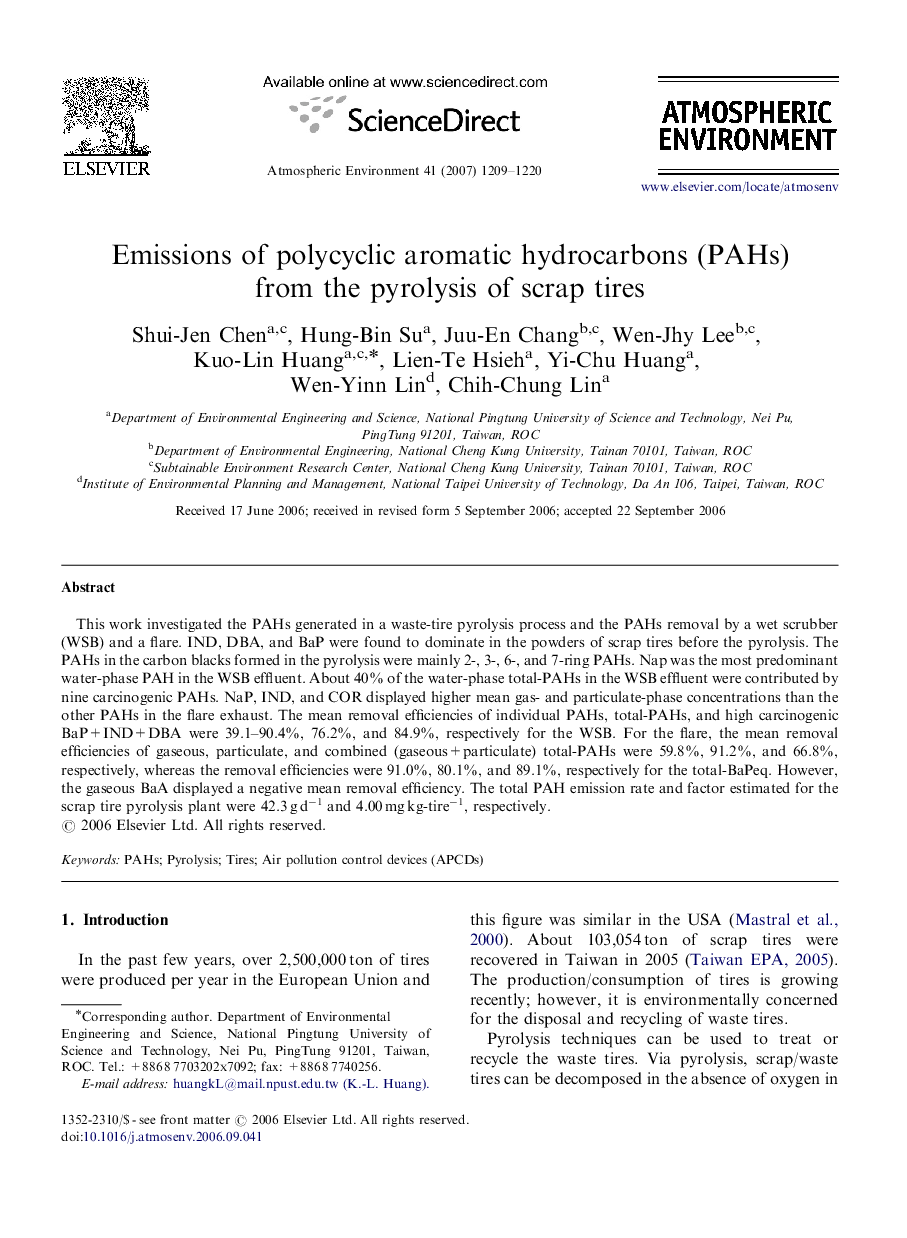| Article ID | Journal | Published Year | Pages | File Type |
|---|---|---|---|---|
| 4443674 | Atmospheric Environment | 2007 | 12 Pages |
This work investigated the PAHs generated in a waste-tire pyrolysis process and the PAHs removal by a wet scrubber (WSB) and a flare. IND, DBA, and BaP were found to dominate in the powders of scrap tires before the pyrolysis. The PAHs in the carbon blacks formed in the pyrolysis were mainly 2-, 3-, 6-, and 7-ring PAHs. Nap was the most predominant water-phase PAH in the WSB effluent. About 40% of the water-phase total-PAHs in the WSB effluent were contributed by nine carcinogenic PAHs. NaP, IND, and COR displayed higher mean gas- and particulate-phase concentrations than the other PAHs in the flare exhaust. The mean removal efficiencies of individual PAHs, total-PAHs, and high carcinogenic BaP+IND+DBA were 39.1–90.4%, 76.2%, and 84.9%, respectively for the WSB. For the flare, the mean removal efficiencies of gaseous, particulate, and combined (gaseous+particulate) total-PAHs were 59.8%, 91.2%, and 66.8%, respectively, whereas the removal efficiencies were 91.0%, 80.1%, and 89.1%, respectively for the total-BaPeq. However, the gaseous BaA displayed a negative mean removal efficiency. The total PAH emission rate and factor estimated for the scrap tire pyrolysis plant were 42.3 g d−1 and 4.00 mg kg-tire−1, respectively.
